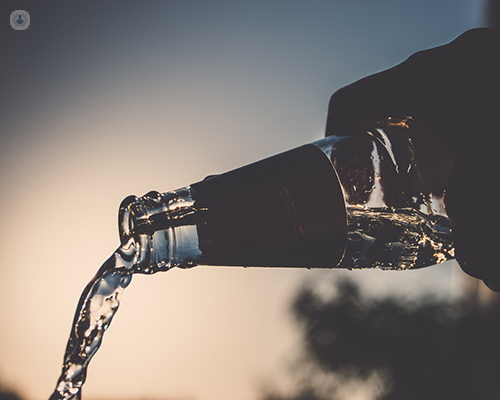How to test your urine flow
Escrito por:When you see a urologist with urinary problems, such as difficulty in passing urine, they normally recommend certain tests to determine the cause of your symptoms and to try and help manage them. Leading Cambridge urologist Mr Nikesh Thiruchelvam explains what tests are used to make a diagnosis.

What are the possible urological problems?
Problems with storing your urine can give you symptoms of urinary frequency and urinary urgency, whereby you have a sudden and often intense urge to pass urine and have to rush to the toilet. Sometimes you can leak before getting to the toilet (urge urinary incontinence).
At other times, when you are more active such as walking or running, or with coughing or sneezing, you can leak urine (stress urinary incontinence). It can also be difficult to store urine at night causing you to get up a number of times when you are sleep (called nocturia).
Problems with emptying your bladder can lead to symptoms of urinary retention, a poor flow, hesitancy or straining to void or dribbling after your void.
What are the different tests used to detect these urological symptoms?
Simple tests that can be performed in the clinic include:
- Urinary dipstick test
- Urine flow test (Uroflowmetry)
- Post-void bladder scan - to measure any residual urine that is left in the bladder.
A frequency-volume chart, also known as a bladder diary or input-output chart is a form completed by the patient which documents the time, volume and type of fluids drank and time and volume of urine passed, associated with urinary leakage. This should ideally be performed for three days and nights.
Further outpatient visit tests involve looking inside the bladder and water pipe with a flexible telescope under a local anaesthetic (flexible cystoscopy) and urodynamics, to assess bladder function.
What’s the difference between Urodynamics and Uroflowmetry?
Uroflowmetry involves passing urine into a measuring device, which measures the volume of urine passed, the maximum flow rate of urine passed and the pattern of flow. The pattern can help diagnose a urethral stricture or obstruction to the bladder.
Urodynamics involves placing a fine catheter into the bladder and one into the back passage. The bladder is then artificially filled and you then void the fluid placed into the bladder. Pressures are measured during this filling phase and also during the voiding part. The filling part of the test is useful to diagnose an overactive bladder, types of urinary incontinence (urge or stress) and a bladder that does not stretch adequately (poor compliance).
The voiding part can diagnose a bladder that is blocked (usually by the prostate in men) or if the bladder has lost its contractile ability (bladder underactivity). Sometimes during the pressure test, I use a dye to fill the bladder and take X-ray pictures (video-urodynamics). It is also possible to measure the pressures in the bladder over a longer period with the normal physiological filling of the bladder with urine (ambulatory urodynamics).
What are the limitations of these tests?
For an adequate flow test, patients need to pass at least 150mls. This is not easy as many patients have urinary symptoms and may find it difficult to hold their urine long enough to pass enough to make the test meaningful.
Urodynamics involves artificial filling of the bladder and asking the patient to void with catheters in place, in a strange environment. Although the test aims to reproduce the patient’s urinary symptoms, clearly this can be difficult given the unusual circumstances of the test!
Are there any risks involved?
There are no risks with the flow test. Urodynamics can cause blood in the urine and burning on passing urine. These symptoms usually resolve within 48 hours. The test can also cause a urinary tract infection but as the risk of this is so low, it is not normal practice to give a preventative antibiotic before the test.


